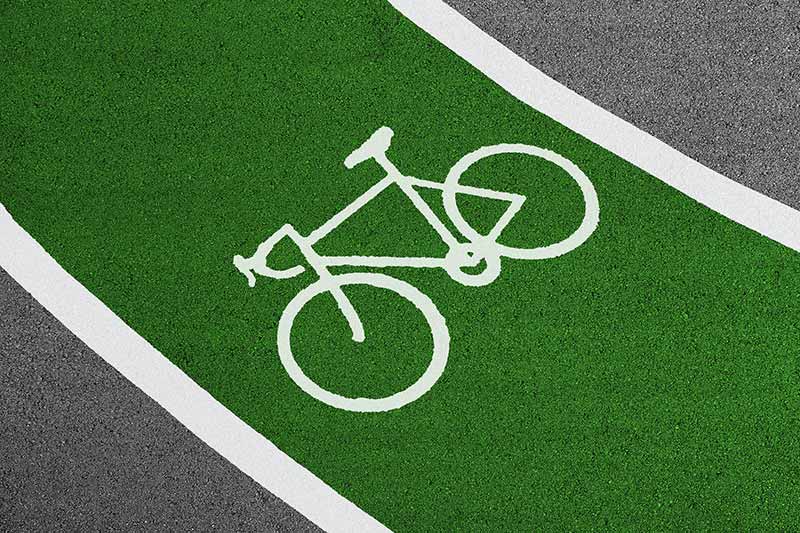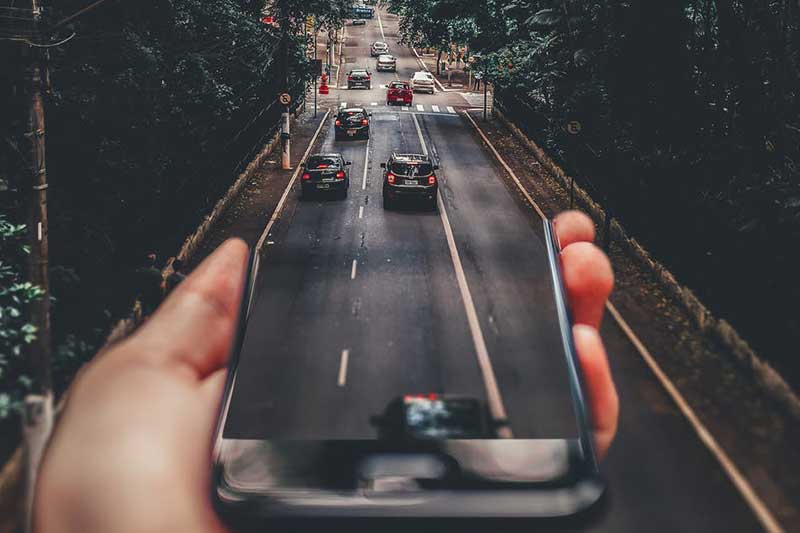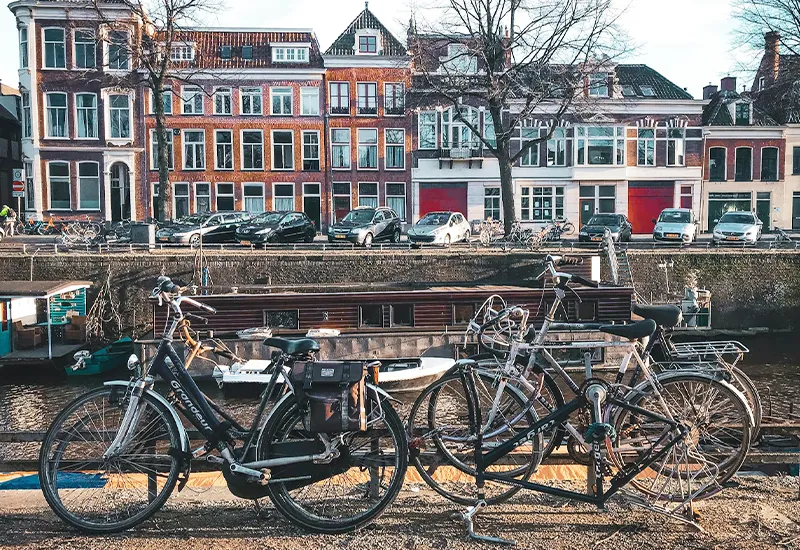What does soft mobility actually mean? If you're looking for a clear answer to this question, you've come to the right place. Some of the biggest environmental problems of our time are a logical consequence of the way we humans move around. I'm thinking, for example, of the air pollution in cities caused by car traffic - and not least the global warmingwhich is generally driven by human emissions of greenhouse gases.
Soft mobility is a Concept for human and environmentally friendly transportation and tackles precisely these problems. And you are sure to be able to find a documentary about the Mass Tourism or stumbled across the term when searching for vacation offers.
In this article, I would like to explain what exactly is meant by soft mobility. From the definition, to the benefits, specific measures and key means of transportation, to the places that are already actively living it. Let's go!
Definition: What is soft mobility?

The term "soft mobility" refers to a political concept that aims to make transportation more environmentally friendly. In particular Vacation regions and city centers far more sustainable, environmentally friendly and socially acceptable - and also significantly reduce the accident rate.
Environmentally friendly forms of transportation are therefore promoted as part of soft mobilityto create sensible alternatives to car use. These include, among other things, promoting the use of public transportation (train, bus, streetcar, etc.), the acceptance and use of Sharing concepts, the Cycling and of course the Walking.
The By contrast, cars (or cabs) should only be used to a reasonable extent. (i.e. as a useful supplement or gap filler).
Tip: Speaking of sharing! Take a look at my article about the E-scooter sustainability an. In it, you'll learn how to use them in the most environmentally friendly and healthy way possible.
Reasons: Why is the concept of soft mobility necessary at all?

The concept of soft mobility has proven to be Responding to various challenges in the field of transport planning and transport policy developed.
Here are some of many central reasonswhich illustrate the need for this solution-oriented approach:
- One-sided lobbying: Motorized private transport (MIV) has had an extremely influential lobby in Germany for many decades. Its promotion has been at the expense of other, more environmentally friendly forms of transport, which is why comprehensive planning for more sustainable forms of mobility is now unavoidable.
- Developed road systems: If the road network is continuously expanded, many people will also make use of the improved services - and prefer driving to sustainable alternatives such as using local public transport.
- Mass tourism: Traffic jams, congested city centers and destroyed natural landscapes are just some of the consequences of the fact that some vacation regions are literally flooded with travelers. In this respect, soft mobility and soft tourism also have a calming and decelerating function.
- Costs for the general public: A vehicle not only incurs costs for construction and maintenance. Its preferential use also generates costs as a result of environmental pollution, land use and accidents, which are generally borne by the general public. Soft mobility therefore also aims to reduce the Externalization of Environmental Costs and to ensure justice.
Advantages: What are the main reasons for soft mobility?
Proponents of soft mobility justify the concept of a traffic turnaround with the increased volume of traffic in cities, among other things. The infrastructure is not able to cope with this and so there are often Traffic jams and stop-and-go traffic. This phenomenon is particularly noticeable in the vicinity of leisure facilities, shopping facilities and recreational areas.
One of the main advantages of soft mobility is therefore above all that an unnecessarily high volume of traffic is prevented by the Promotion of space-saving, alternative forms of transportation is avoided.
Because the streets in the city centers are available for pedestrians, potential pedestrian traffic is also reduced. Confrontations between careless pedestrians and drivers automatically reduced.
There really are countless reasons for soft mobility. Here I have therefore put together a clear List of the most important advantages compiled:
- Less congestion and stop-and-go traffic
- The use of low-emission means of transport is becoming more attractive
- Car-free areas encourage the influx of young families with children
- Promotion of public transport
- Attractive city concepts reduce the need for outbound travel
- More relaxing, quieter city centers
- Promoting social justice through accessibility
- Increased road safety
- Improved air quality in urban areas
- Sustainable urban and regional development
Tip: In this context, be sure to check out the post about the Life without car on! Of course, this doesn't work for all of us - but more and more people are now getting by without their own car.
Does soft mobility also have disadvantages?
Representatives of conventional transport policy point out above all that people by car directly to the front door or directly to their destination without having to cover the last few meters elsewhere. The Loss of sales for the local economyas a result of the lack of car traffic, is often mentioned.
But in my opinion, soft, sustainable mobility only knows winners. Because the Life in cities is becoming more attractive, healthier, more environmentally friendly and safer. The concept slows down our everyday lives and, above all, is a future-oriented means of combating the Air Pollution and other ecological challenges of our time.
If anything can really be described as a disadvantage of soft mobility, then it is certainly the Cost intensity of changes in urban areas. But since it makes our lives better in the long run, it's probably more of an investment than a cost.
Measures: How can the concept of soft mobility be strategically implemented in practice?

Within the framework of soft mobility, strategies are being developed that serve the transportation transition. All of this with the aim of Improve the quality of life in the city or in a particular vacation region.
To this end, for example, subsidies for air traffic are to be reduced and the Expansion of infrastructure for bicycles be forced. A favorable or even Free local transportation by bus and train can play a significant role in this.
Also the Incentives to use a low-emission, electric car if required Finance a car or to useare being increased through political measures in the interests of soft mobility. For example, the Mineral oil tax raised - The tax revenue then finances parking space management, for example.
Soft mobility even aims to achieve a Road reconstruction so that nature has significantly more space and traffic is calmed. Shorter distances also prevent urban sprawl in the surrounding area.
Good to know: The formation of car pools by tour operators or private travel groups (e.g. from the train station to the travel accommodation) also reduces car journeys. This is also a sensible measure in terms of soft mobility.
Tourism: What positive examples are there of soft mobility in vacation regions?
Admittedly: There are not yet many outstanding examples for the concept of soft mobility. But some cities are showing how it can work!
A very good example is the Austrian town of Werfenweng. Anyone arriving by bus or train will automatically receive a guest card on site. With this so-called "SAMO-Card", you can then use the Werfenweng shuttle and the town's entire e-vehicle fleet.
A Europe-wide, standardized ticket system for local public transport could also accelerate development in other cities, for example. Never before in history has there been such freedom to travel as there is today. And by promoting or standardizing local public transport, this freedom can be usefully supplemented. In Germany, the 49 euro ticket a positive example.
Soft mobility - getting around together in an environmentally friendly way!
Soft mobility is definitely the Concept for the mobility of the future. The advantages for people and the environment outweigh the few disadvantages and challenges. In particular, the improvement in air quality, the relief from car traffic and the use of climate-friendly, renewable, i.e. non-limited energiessuch as electricity from solar, hydro and wind power, make this concept so sustainable.
"The beaten path is the safest, but the traffic’s terrible."
Jeff Taylor (more at Mobility Quotes)
Finally, I would like to give you some Further articles from the blog that are directly related to an environmentally friendly form of transportation:
- Sustainable commuting - what everyone can do
- Environmentally conscious driving - the best tips
- Sustainable living in the city - how it works
Do you have any questions, suggestions or your own experience with the idea of soft mobility that you would like to share? Then simply write me a comment.
Stay sustainable,

PS: In my Mobility Blog you can find out so much more about how we can make our way of transportation more sustainable. Next, for example, take a look at my Tips for sustainable travel and use it straight away on your next vacation.







